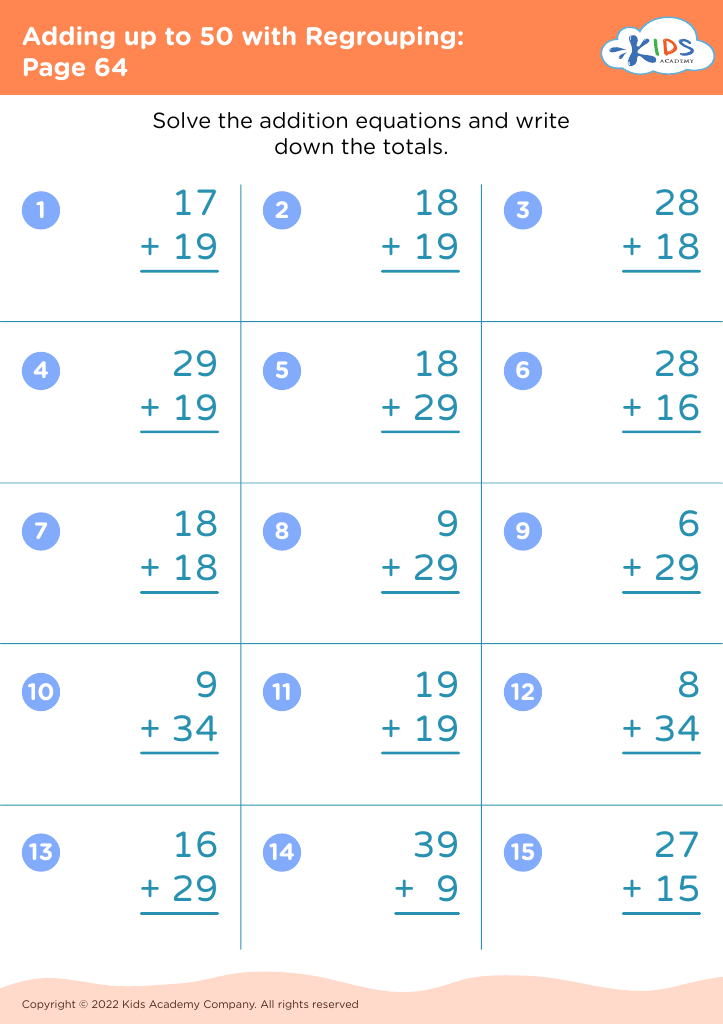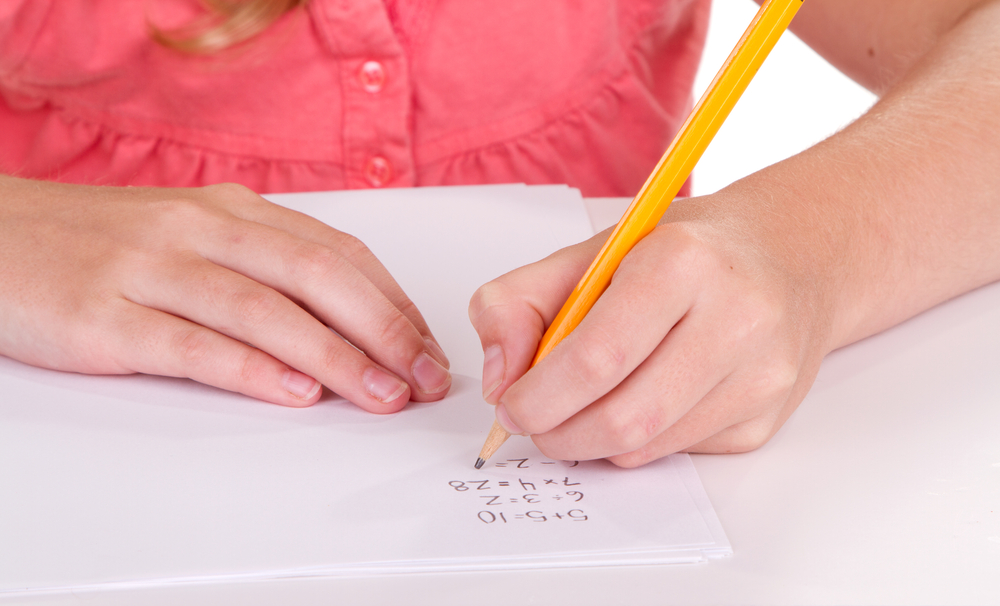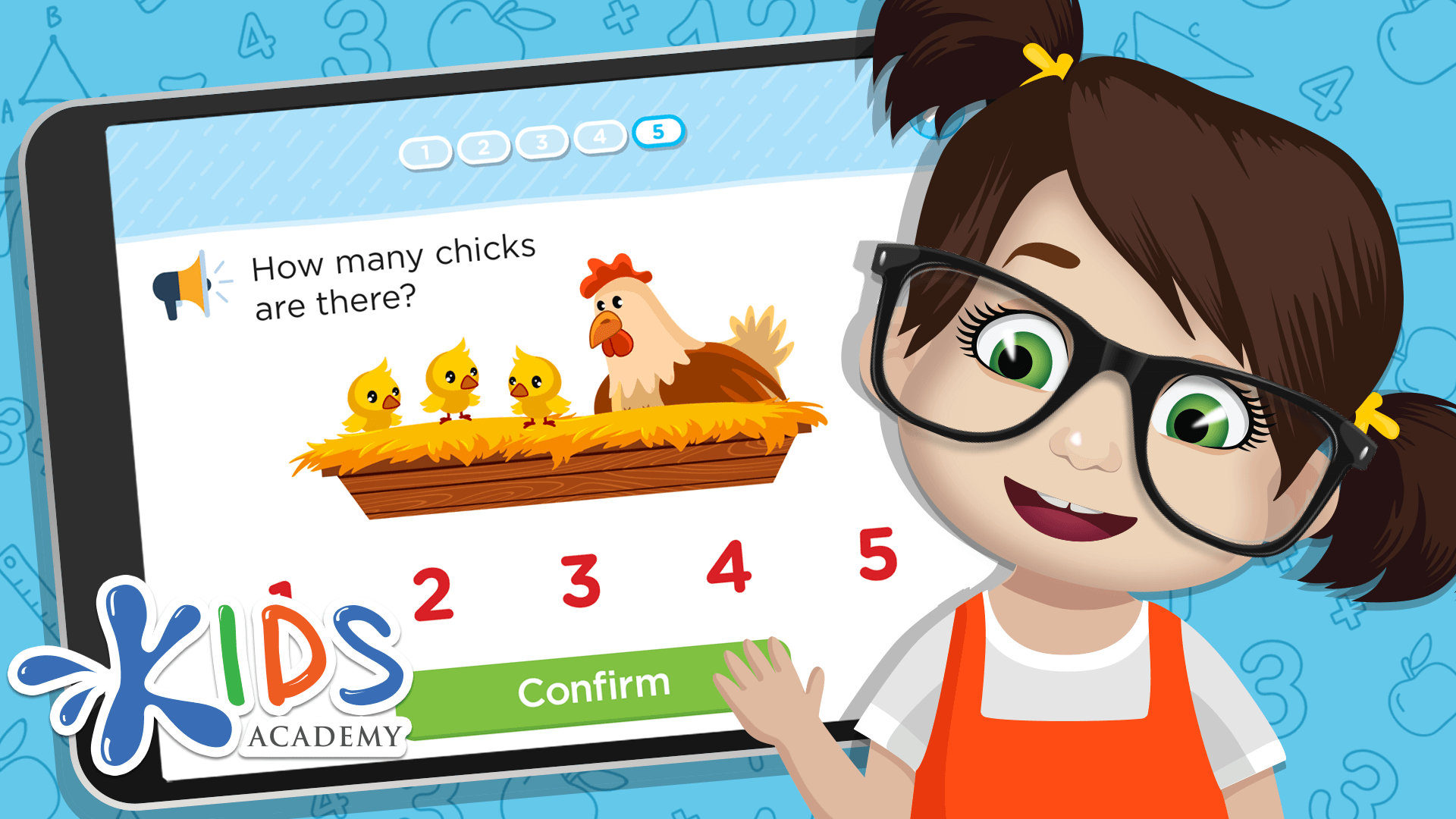Math skills improvement Addition & Subtraction Worksheets for Ages 6-9
5 filtered results
-
From - To
Boost your child's math skills with our engaging Addition & Subtraction Worksheets designed for ages 6-9. These worksheets offer a fun and interactive way for young learners to practice and master basic arithmetic. Featuring a variety of problems, from simple sums to complex equations, each worksheet encourages critical thinking and problem-solving. Perfect for both home and classroom use, our carefully crafted worksheets will help reinforce foundational math concepts, build confidence, and improve academic performance. Enhance your child's learning experience with our trusted resources and watch their math skills soar. Visit Kids Academy and download our printable worksheets today!
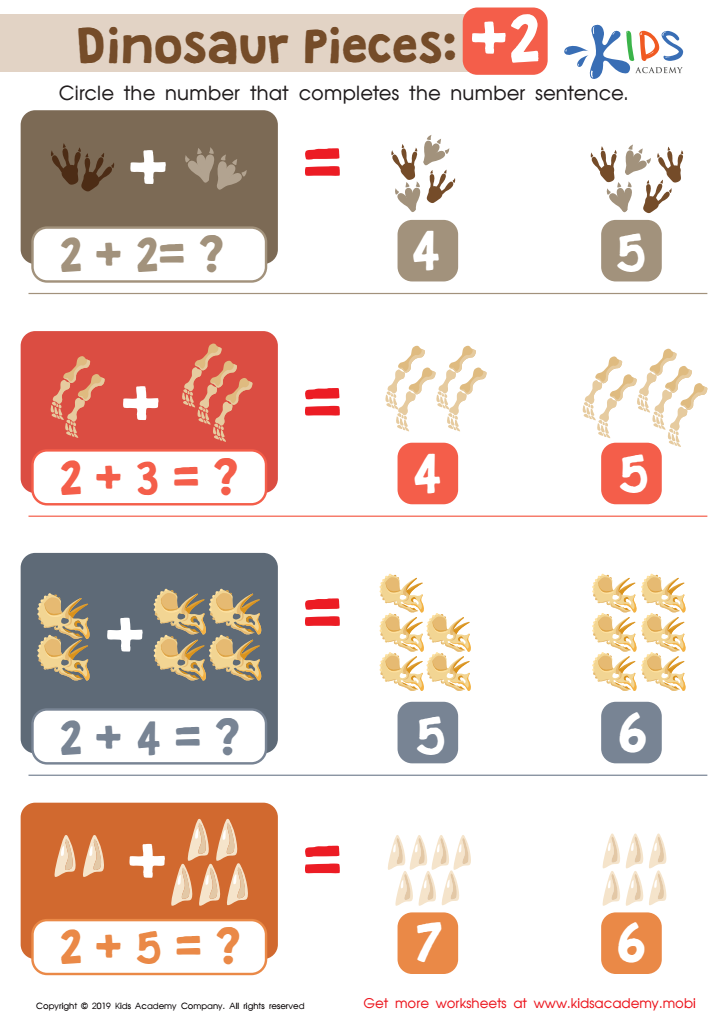

Dinosaur Pieces: +2 Worksheet
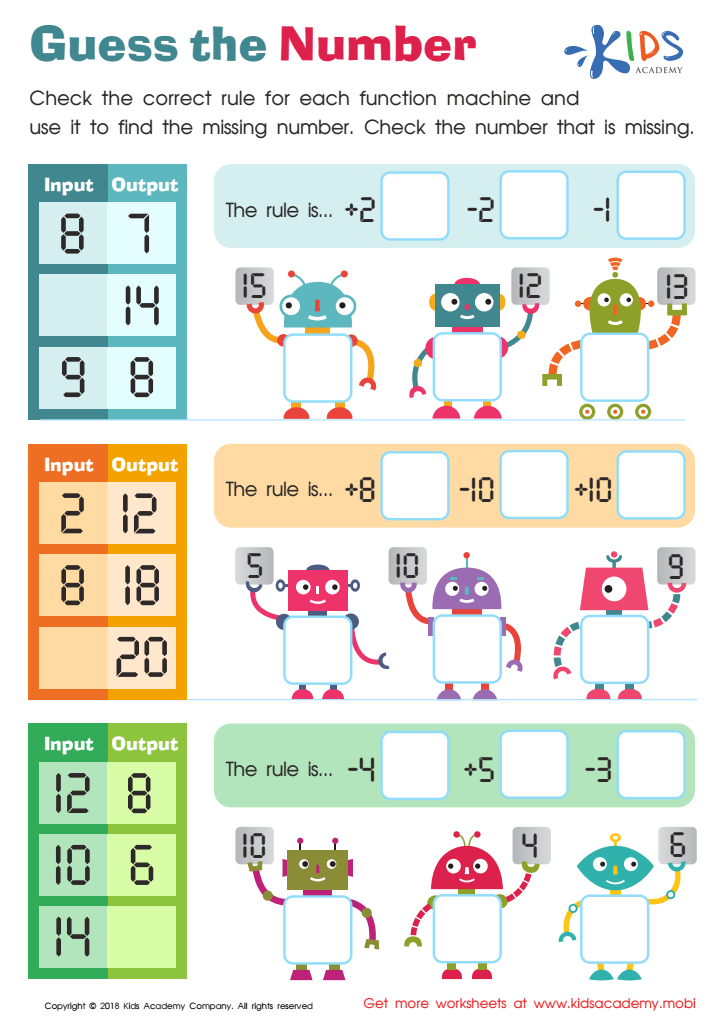

Guess the Number Worksheet
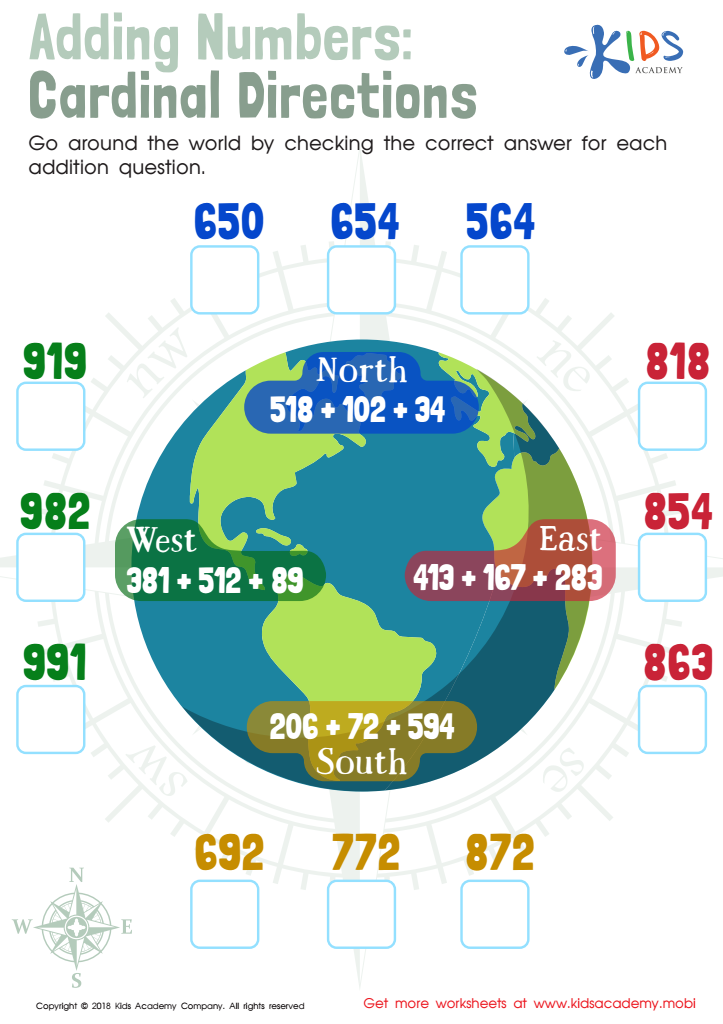

Adding Numbers: Cardinal Directions Worksheet
Parents and teachers should recognize the critical importance of improving math skills, particularly addition and subtraction, for children aged 6-9. This foundational stage in a child's education sets the groundwork for more advanced mathematical concepts and everyday problem-solving abilities.
First, proficiency in addition and subtraction enhances cognitive development. These early math skills engage a child's brain in logical thinking and pattern recognition, crucial for higher-order thinking processes. By mastering these basics, children build confidence and develop a positive attitude towards math, which is essential for tackling more challenging subjects in the future.
Second, everyday life skills are heavily reliant on basic math. Simple tasks such as counting change, measuring ingredients for a recipe, or telling time all require a fundamental understanding of addition and subtraction. Early mastery ensures children can navigate daily activities more independently and efficiently.
Furthermore, early math skills are often predictive of future academic success. Studies show that children who grasp basic math concepts early on perform better not only in mathematics but across various subjects throughout their schooling. This sets the stage for better educational outcomes, opening doors to advanced education and career opportunities.
Therefore, focusing on math skills improvement in these formative years is not only about navigating school curriculum effectively but also about equipping children with vital tools for their personal, academic, and future professional lives.
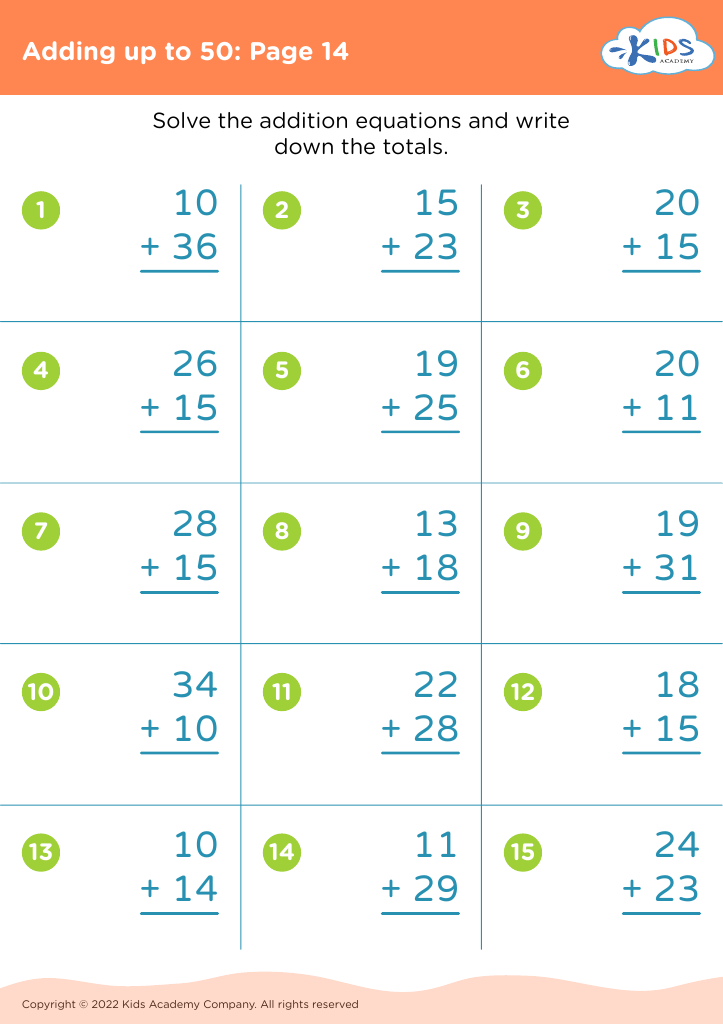

 Assign to My Students
Assign to My Students
